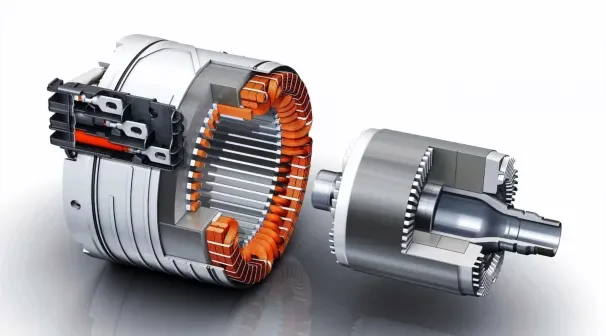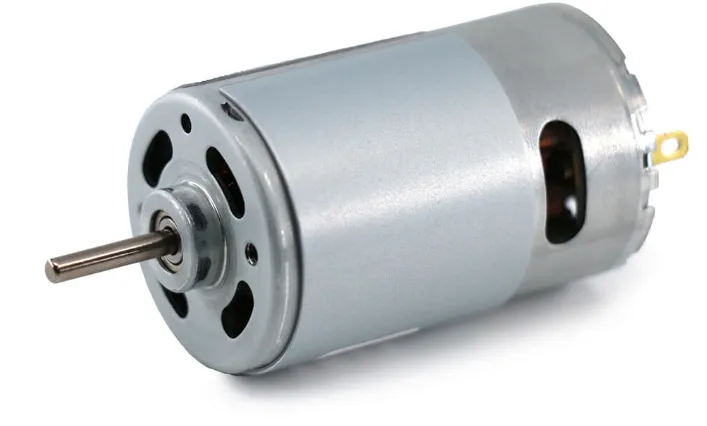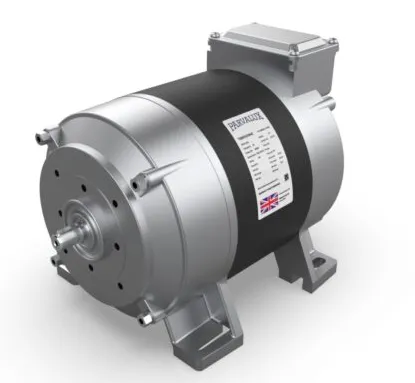Different Types of Electric Motors All Explained

As universally acknowledged, the electric motor serves as a cornerstone across all industrial domains, finding extensive utility in diverse applications. A plethora of electric motor variants populate the market, catering to distinct operational requirements, voltages, and usage scenarios. Each motor comprises two fundamental constituents: the field winding and the armature winding. The primary role of the field winding is to establish a consistent magnetic field, while the armature winding, akin to a conductor, operates within this magnetic field. By harnessing the magnetic forces, the armature winding expends energy to generate sufficient torque for propelling the motor shaft. Presently, categorization of DC motors hinges on the arrangement of winding connections, delineating how the two coils within the motor interconnect.
As universally recognized, the electric motor assumes a pivotal role across diverse industrial sectors and a broad spectrum of applications. A multitude of electric motor variations are readily accessible in the market, offering options for selection based on operational requirements, voltage specifications, and intended uses. Every electric motor comprises two indispensable components: the field winding and the armature winding. The primary function of the field winding is to establish a stable magnetic field, while the armature winding, resembling a conductor, operates within this magnetic field. Leveraging the magnetic field, the armature winding expends energy to generate adequate torque, propelling the motor shaft into motion. Presently, classification of DC motors hinges on the configuration of winding connections, delineating the interconnection of the two coils within the motor.
DC Motors

The categories of DC motors primarily encompass Series, Shunt, Compound wound, and PMDC Motor.
1). DC Shunt Motor
Operating on DC power, the DC shunt motor features armature and field windings connected in parallel, forming a shunt configuration. Also known as a shunt wound DC motor, this motor utilizes a shunt winding. For further insights into the working principles and applications of the DC shunt motor, please refer to this link.
2). Separately Excited Motor
In a separately excited motor, the stator and rotor connections can be powered separately, allowing control from both the shunt and armature windings to enhance flux generation.
3). DC Series Motor
In the DC series motor, rotor windings are interconnected in series. Its operational principle primarily relies on electromagnetic induction, stating that the interaction between a magnetic field formed around a conductor and an external field generates rotational motion. These motors find extensive use in starter motors employed in elevators and automobiles. For a deeper understanding of the working principles and applications of the DC series motor, please refer to this link.
4). PMDC Motor
PMDC, short for "Permanent Magnet DC motor," represents a type of DC motor integrated with a permanent magnet to establish the requisite magnetic field for motor operation. For further insights into the construction, working principles, and applications of PMDC Motors, please consult this link.
5). DC Compound Motor
Typically, the DC compound motor amalgamates features of both DC series and shunt motors. This motor variant encompasses both series and shunt fields. In this electric motor type, the stator and rotor can be interconnected through compound windings, comprising both series and shunt windings. The series winding may comprise a few turns of thick copper wire, offering low resistance, while the shunt winding may feature multiple turns of copper wire to accommodate the full input voltage.
AC Motors

The categories of AC motors predominantly include synchronous, asynchronous, and induction motors.
1). Synchronous Motor
The operation of synchronous motors hinges on a 3-phase power supply. The stator of the motor generates a field current, resulting in rotation at a stable speed determined by the AC frequency. Similarly, the rotor synchronizes with the speed of the stator current, maintaining no air gap between their speeds. These motors find application in scenarios demanding high rotational precision, such as automation and robotics. For further elucidation on synchronous motor varieties and applications, please refer to this link.
2). Induction Motor
An electric motor that operates at asynchronous speeds is referred to as an induction motor, also known as an asynchronous motor. Induction motors primarily rely on electromagnetic induction to convert electrical energy into mechanical energy. These motors are categorized into two types based on rotor construction: squirrel cage and phase wound. For a deeper understanding of the types and advantages of induction motors, please refer to this link.
Special Purpose Motors
Special purpose motors encompass a variety of types, including servo motors, stepper motors, linear induction motors, and more.
1). Stepper Motor
Stepper motors provide precise step angle revolutions as opposed to continuous revolutions. Unlike traditional motors where a full revolution angle is 180 degrees, stepper motors divide the complete revolution angle into numerous steps, such as 10 degrees divided into 18 steps. These motors find applications in plotters, circuit fabrication, process control tools, and other motion generation systems. To explore different types and applications of stepper motors, please refer to this link.
2). Brushless DC Motors
Originally developed to offer superior performance in a compact size compared to brushed DC motors, brushless DC motors are smaller in size compared to their AC counterparts. These motors feature an embedded controller to facilitate operation in the absence of a commutator and slip ring. To learn more about the advantages, applications, and control of brushless DC motors, please refer to this link.
3). Hysteresis Motor
The operation of hysteresis motors is uniquely characterized by inducing hysteresis and eddy currents in the rotor to perform tasks. These motors can operate on either single-phase or three-phase power supplies and deliver smooth operation at a constant speed, similar to other synchronous motors. Due to their low noise levels, hysteresis motors find applications in various complex systems requiring soundproofing, such as sound players and audio recorders.
4). Reluctance Motor
Essentially a single-phase synchronous motor, the reluctance motor features a construction similar to that of an induction motor with a cage-type rotor. The stator includes sets of windings, including auxiliary and main windings, with the auxiliary winding particularly useful during motor startup to ensure smooth, stable operation at a consistent speed. Reluctance motors are commonly used in synchronization applications, including signal generators and recorders.
5). Universal Motor
A unique type of motor, the universal motor operates on either a single AC or DC power supply. Series wound, these motors connect the field and armature windings in series, resulting in high starting torque. Designed for operation at high speeds exceeding 3500 rpm, universal motors utilize AC supply at low speeds and DC supply of similar voltage. For more information on universal motors, please refer to this link.
In conclusion
The realm of electric motors encompasses diverse and adaptable types, each serving specific purposes. Whether motion control is required, electric motors stand as the optimal choice, supporting the functionality and performance of various systems. As for special types of motors, they encompass a wide array of specialized designs tailored for specific applications and operational requirements.
Rlated Articles
Do ECM Motors Have Capacitors?
How Does a Single Phase Motor Work?
What is an Induction Motor :All You Need to Know
What L298 Motor Driver IC can do and How it Works
2SC5200 Transistor:Pinout and Applications
What Low Pass Filter Is and How It works
Exploring Electronic Components(Guide)
Top 10 Common Electronic Components Guide
How to Test Automotive Relays (Guide)
Introduction to Flash Memory
What a Human Machine Interface system is and How it works
How does HMI Improve User Interaction in Control Systems?
What is an Electric Motor? Explain its Types
What L298 Motor Driver IC can do and How it Works










